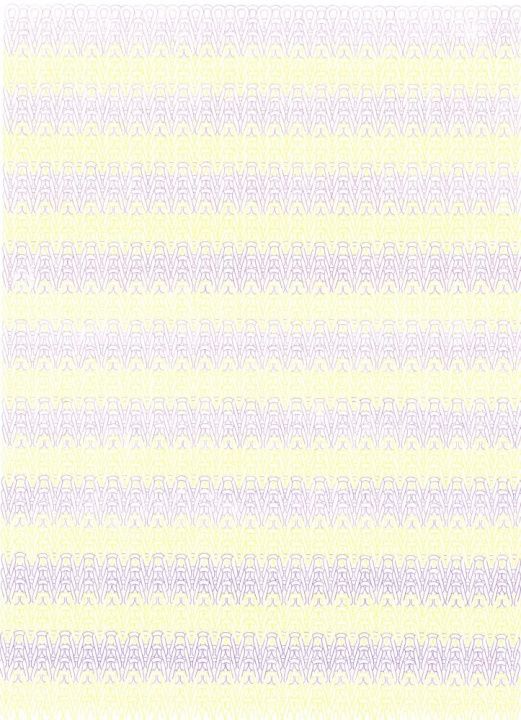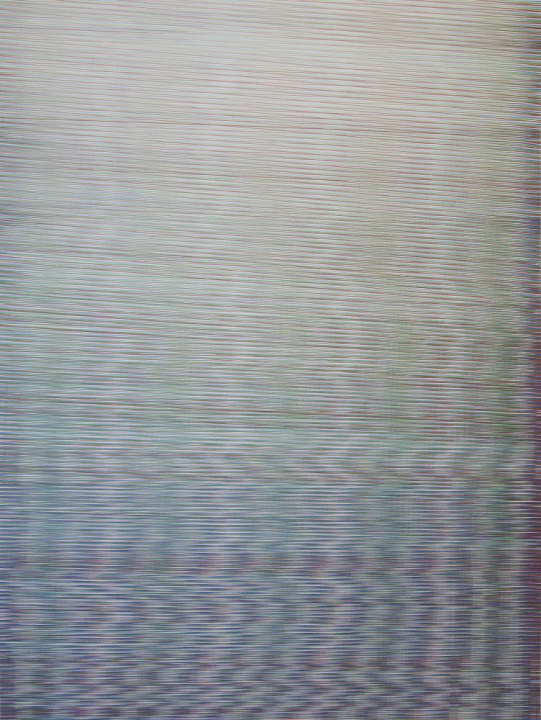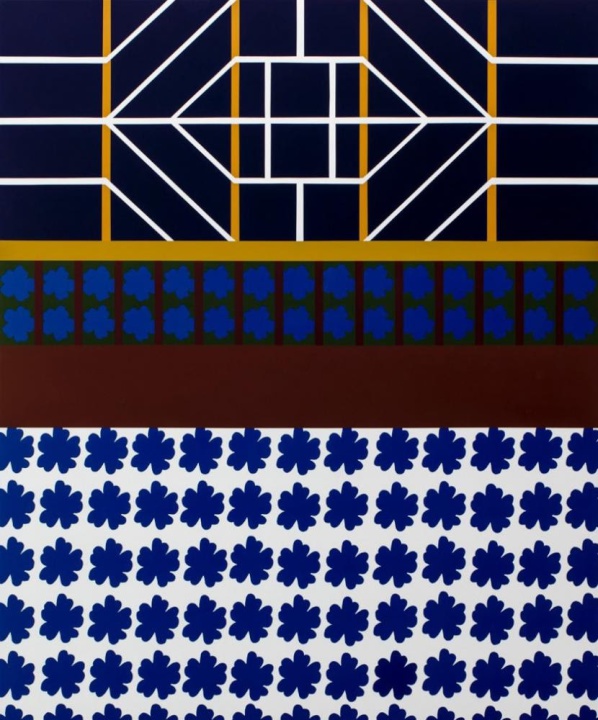Merely a Frame, curated by Esther Stewart
Merely a Frame, curated by Esther Stewart, 11 August – 8 September, 18
Merely a Frame, an exhibition curated by Esther Stewart, brings together works by three artists that deal with abstraction and the interfaces between art and other creative fields such as design, architecture, textiles and dance.
The "frame" referred to in the title might be the frame of an artwork, the barrier that traditionally delineates the zone in which artmaking and consumption takes place from the non-art universe. It might also be a "frame narrative," a story within a story, a submerged frame of reference obscuring both the tale and the teller. In either case, Stewart’s choice of title suggests an ambivalence towards the idea of "framing," in all of its meanings.

Kato Six, Striped knitwear
2017, pencil on paper
500mm × 700mm
This show includes both drawings and a sculpture, Spinning Lines Twisting Thoughts, by Kato Six. Six’s work deals with a materiality that is liminal and intangible: in other works, she has used dust as a medium, while in Spinning Lines the work takes the form of a number of lengths of black and white rope, that are knotted and wound around one another to form the work. The knotting of the ropes, their topological relationship to one another, is open to change and reconfiguration when the work is re-shown; in effect, each iteration of the work becomes a unique confluence of space, material and information. Six’s drawings likewise deal with the idea of knotting and topology, but in the context of knitting, diagramming the fundamental building blocks of a piece of fabric, and reimagining it as an expansive network of interconnected spatial movements.

Maureen Kaegi, untitled
2016,
acrylic on canvas
1800mm × 1350mm
Maureen Kaegi fills the picture plane of her drawings with red, blue and green lines, creating an all-over effect that mimics the way the omnipresent LCD (liquid crystal display) screens that saturate the contemporary landscape mix a small number of pure coloured lights to create the millions of colours on-screen. Like a defective laptop or phone screen, Kaegi’s images use these simple building blocks to create a hazy, atmospheric blur of gradated colours, in which the lines’ overlapping of one another leads to the emergence of noisy interference reminiscent of static or Moiré patterns. Kaegi’s work has in the past included elements of performance, and her drawings likewise invite us to consider the activity of mark-making, as well as its outcome.

Esther Stewart,
Behind the balustrade , Rosy Heath Myrtle
2017,
acrylic on board
1800mm × 1500mm
Esther
Stewart’s paintings deploy the language of architecture
and interior design in service of a subtle, incisive and
expansive exploration of the nature of representation in
pictorial art. Stewart cites an eclectic range of
influences, from the Bauhaus to Islamic art, in reference to
these works. In particular, Stewart has pointed towards the
1980s Italian designers and architects of the Memphis Group,
whose postmodern approach to interior design, emphasising
bold colours, patterns and an idiosyncratic approach to
furniture, are echoed to some extent in her works. The
paintings included in this show describe elegant geometries
that are also in some sense interiors, yo-yoing between the
diagrammatic and the abstract.
Merely a Frame
presents a range of approaches to the problem of developing
a visual vocabulary in a contemporary art environment. For
these artists, a focus on materials, form and colour
provides a means of doing this; here, a focus on physicality
and presence, as well as a renewed address to the formal
elements of the work, can amount to a kind of
freedom.


 National Youth Theatre: 140 Christchurch Kids Shine In National Youth Theatre’s Historic CATS Premiere
National Youth Theatre: 140 Christchurch Kids Shine In National Youth Theatre’s Historic CATS Premiere NZ Symphony Orchestra: NZSO To Tour Masterworks By Mozart, Beethoven, Haydn And More
NZ Symphony Orchestra: NZSO To Tour Masterworks By Mozart, Beethoven, Haydn And More Journal Of Public Health: Vape Shops Cluster Around Schools
Journal Of Public Health: Vape Shops Cluster Around Schools Timaru District Council: Aigantighe Art Gallery Hosts An Iconic Robin White Touring Exhibition
Timaru District Council: Aigantighe Art Gallery Hosts An Iconic Robin White Touring Exhibition Victoria University of Wellington: Dame Winnie Laban Awarded Honorary Doctorate Recognising Achievements For Pasifika
Victoria University of Wellington: Dame Winnie Laban Awarded Honorary Doctorate Recognising Achievements For Pasifika  HESSA: This Isn’t Fair—And It’s Time To Fix It - HESSA Petition Calls For Inclusive Student Sports
HESSA: This Isn’t Fair—And It’s Time To Fix It - HESSA Petition Calls For Inclusive Student Sports